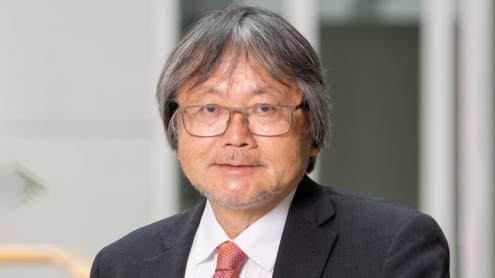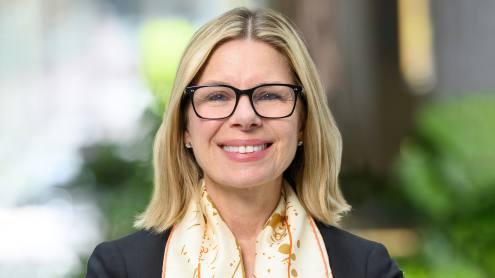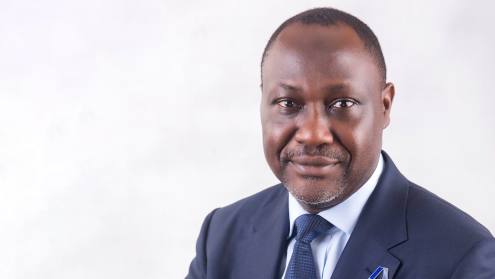During his six years as the finance secretary, or finance minister, of the Philippines, Cesar Purisima has steered the country onto a path of fiscal stability, robust economic growth and increasing infrastructure investment through public-private partnerships (PPPs). And although it is not certain he will continue as finance secretary after Filipinos elect a new president on May 9, 2016, Mr Purisima argues his economic reforms are so institutionally embedded that they are here to stay.
Throughout Mr Purisima’s mandate, the Philippines' gross domestic product (GDP) growth averaged at a solid 6.2%. But the finance secretary’s work was about keeping the books in order as much as it was about growth.
Good governance
On the fiscal front, discipline has exemplified Mr Purisima’s work. “We believed in one core philosophy: That good governance yields good economics. This meant we had to stick to fiscal discipline and responsibility even when, at times, populist but unsustainable measures were gaining traction,” says Mr Purisima. “The foresight to think ahead in prioritising fiscal sustainability above all else was key.”
The Philippines' debt-to-GDP ratio fell from 52.4% in 2010 to 44.8% in 2015 – the lowest level since 1996, the first data point on record. Reserves are now sufficient to cover more than 10 months of imports at $80.6bn, as of the end of 2015, and the country has registered current account surpluses for 12 years straight. And although government expenditure hit double-digit growth during Mr Purisima’s mandate, the Philippines’ budget deficit still dropped from 3.5% of GDP in 2010 to 0.8% of GDP in 2015.
Increasing government revenue, especially through tax proceeds, was crucial to squeezing the Philippines' budget deficit. The government’s tax revenues grew from 12.1% in 2010 to 13.7% of GDP in 2015, without increasing income or value-added taxes. Instead, the Philippines put into effect the 'Sin Tax' in 2012, which will increase tax on tobacco and alcohol by 4% every year unless the law is amended. As of October 2015, the Sin Tax added 149.5bn pesos ($3.24bn) to Philippines government coffers and has helped expand its national healthcare coverage to 81% of the population.
Transforming how the budget is calculated was also crucial to the country’s economic performance. “We focused on… adopting bottom-up, zero-based and grassroots participatory budgeting with open data in mind,” says Mr Purisima. In 2012, the government launched bottom-up budgeting – state programmes that encourage and facilitate interactions between civil society organisations, citizens groups and local governments or national government agencies to calculate a more accurate budget.
Liability management
On the sovereign debt front, building a liability management programme, whereby bondholders of eligible government securities are invited to exchange their bonds for new benchmark notes, was instrumental in keeping debt levels under control and in reinforcing the Philippines’ reputation in international capital markets. Only 17.1% of the 2016 budget – the lowest proportion since the mid-1980s, according to the finance department – was allocated to servicing the country’s debt.
The Philippines’ liability management transactions are aimed at extending the issuer’s maturity curve while reducing debt servicing costs. According to the Philippines’ treasury, about $25.46bn-worth of bonds have been retired and $29.4bn-worth of bonds have been issued overall since 2010 under the domestic and external liability management programmes.
Indeed, swapping dated, illiquid bonds for longer term, new benchmarks, especially in dollars at a time when US Treasury yields are particularly low, means the Philippines has been able to lock in long-dated dollar funding at very low rates.
In January 2015, the Philippines broke records in terms of pricing with a $2bn benchmark. “It took courage and conviction to pursue a strategic transaction in the midst of global market volatility. Strong economic fundamentals and [a strong] track record of well-placed deals allowed [the Philippines] to be the first issuer in the global dollar market [in 2015] and to execute a $2bn 25-year bond at an all-time low coupon of 3.95% for the 25-year dollar bond,” said Mr Purisima in a 2015 note. The coupon was particularly low considering the sovereign paid 5% for a 25-year bond in 2012. Meanwhile, the old bonds that were swapped for the dollar benchmark had coupons of between 4% and 9.375%.
The sovereign priced an even tighter 25-year dollar benchmark in far choppier markets one year later. In February 2016, the Philippines priced a $2bn note with a record-low coupon of 3.7%. As in the case of the January 2015 deal, this transaction was part of a debt swap – the sovereign accepted tenders for five different bonds with maturities ranging from 2016 to 2034 in exchange for the new $2bn bond, according to Finance Asia.
Infrastructure spending soars
The country’s liability management programme, together with drops in the Philippines’s budget deficit, are helping build investment capacity in the country, which Mr Purisima is keen to use in infrastructure and to help reduce poverty. Today, more than one-quarter of the population lives below the poverty line. “Having strong macroeconomic fundamentals affords us more space to invest in our people in order to realise our demographic dividend,” says Mr Purisima. The Philippines is one of the youngest countries in Asia, with a median age of 23.
The country’s infrastructure financing requirements are estimated to be $127bn. But between 1983 and 2000, average infrastructure expenditure never exceeded 2% of GDP. “Compared with our regional peers, who have been investing heavily in infrastructure, we obviously had a lot to catch up on when we started [our mandate] in 2010,” says Mr Purisima. Since then, however, infrastructure spending more than quadrupled to 760bn pesos, accounting for 5% of GDP and 25.5% of the 2016 national budget, up from 10% in 2010.
Mr Purisima has put PPPs at the centre of this infrastructure drive. “PPPs are not just a financing mode. They are a way to get better management and better technology into government infrastructure,” he says.
And while some analysts lament the slow pace of some PPP projects, Mr Purisima remains optimistic. “We made sure our PPP framework was legally and technically sound, and while it took a while for the programme to take off… we’ve increased the chances of our programme becoming more sustainable,” he says. The country has so far awarded 11 PPP contracts. Fourteen others have been officially presented and there are another 50 bankable, solicited PPP projects in the pipeline.
Mr Purisima has also been pushing to amend the country’s PPP Law, originally set up in the 1990s. “Between then and now we’ve had our experiences and we are trying to codify the lessons we’ve learned into a law that can be institutionalised,” says Mr Purisima. The amendments will not be passed in time for presidential elections in May, but Mr Purisima is confident the next administration will succeed in amending the law.
New infrastructure fund
With the rise of PPPs has also come innovation in infrastructure financing. Banks remain key players in this field. “So far, the banking system has been absorbing PPP financing needs. Banks’ borrowing limits in the infrastructure sector were expanded by the central bank and banks’ liquidity remains high,” says Mr Purisima.
However, the Philippines needs to diversify funding sources as it rolls out further, larger infrastructure projects, he adds. Indeed, in 2012 the government set up the Philippine Investment Alliance for Infrastructure – the first fund of its kind dedicated to equity investment in the Philippines' infrastructure. The Asian Development Bank, Dutch pension asset manager Algemene Pensioen Groep and the Macquarie Group are members of the fund. The Filipino government pensions system is the largest investor at $400m.
The 26bn pesos fund has almost been completely used after investing in six infrastructure projects. Now, a second tranche could be unleashed soon, according to Mr Purisima.
As the Philippines’ infrastructure financing needs continue rising, the sovereign might consider printing its first infrastructure bond. “We have still not decided because there is still no need. But the general agreement is that, when the time comes, this could be a handy instrument. We can take advantage of our sovereign credit rating to raise funds and pass them on to PPP project proponents,” says Mr Purisima.
Infrastructure needs in the Philippines remain considerable. But throughout his mandate, Mr Purisima has developed and modernised the country’s PPP and infrastructure financing models. And while capital outflows and falling currencies shook up some emerging markets in the past 18 months, the Philippines’ economic fundamentals remained strong.
But will the next administration uphold Mr Purisima’s economic policies? “Considering the record of the Aquino administration’s economic management, I highly doubt that there will be any major changes. I am confident reforms have been institutionalised deep enough that our momentum to move forward is greater than the inertia to fall back,” he says.











